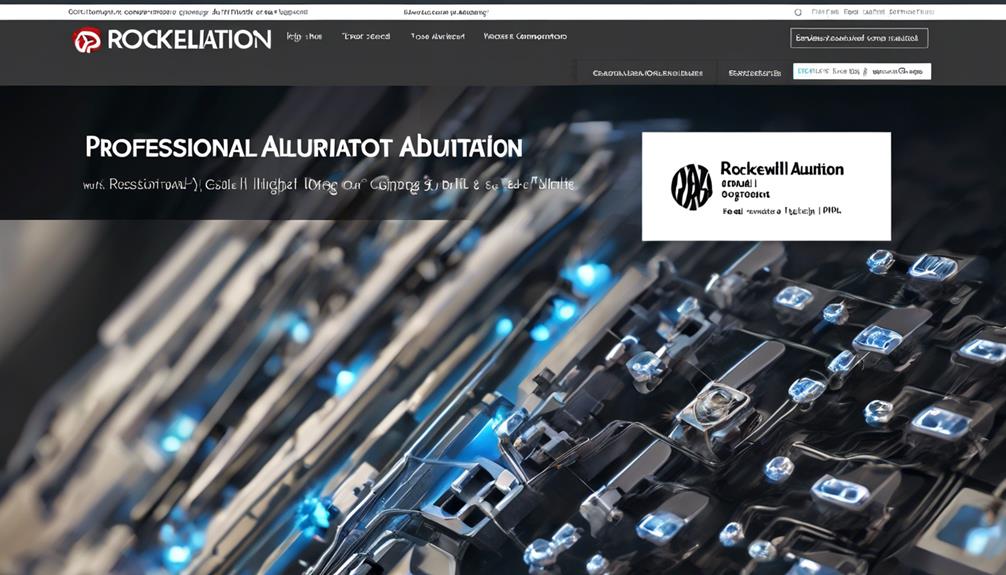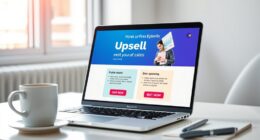We all know about the data showing that the return on investment (ROI) for email marketing stands at an impressive 3800%. However, what strategies can we deploy to guarantee that our email automation efforts are fully capitalizing on this opportunity?
It's not just about setting up a series of automated emails and hoping for the best. There are key best practices that can make or break the success of your email automation efforts.
From personalization and segmentation to testing and optimization, the strategies we implement can significantly impact our results.
So, what are these best practices, and how can we effectively implement them to drive better engagement and conversions?
Key Takeaways
- Tailor workflows to target audience and goals
- Utilize recipient-specific information and segment audience based on preferences and behavior
- Provide value before making direct requests and personalize requests to align with audience's interests
- Track metrics, experiment with different approaches, and refine strategies for more efficient and impactful workflows
Planning Your Workflows
We meticulously plan our email workflows, ensuring they're tailored to our target audience and designed to achieve our specific goals.
To excel in email marketing, it's crucial to define our target audience and identify the types of workflows we want to implement. By mapping out the structure of each workflow, including branching paths and messages, we can visualize and plan our workflows ahead of time.
This approach allows us to personalize email content, senders, and subject lines, thereby increasing open and engagement rates. Additionally, planning the use of static and automatic entry triggers enables us to control when individuals enter the workflow, ensuring flexibility in our automation.
Setting clear goals for each workflow is also essential to track success and make improvements. By aligning our workflow plans with our goals and deadlines, we can ensure that our email marketing efforts are strategic and effective.
These meticulous planning practices are fundamental in implementing successful marketing automation best practices.
Personalizing Email Content
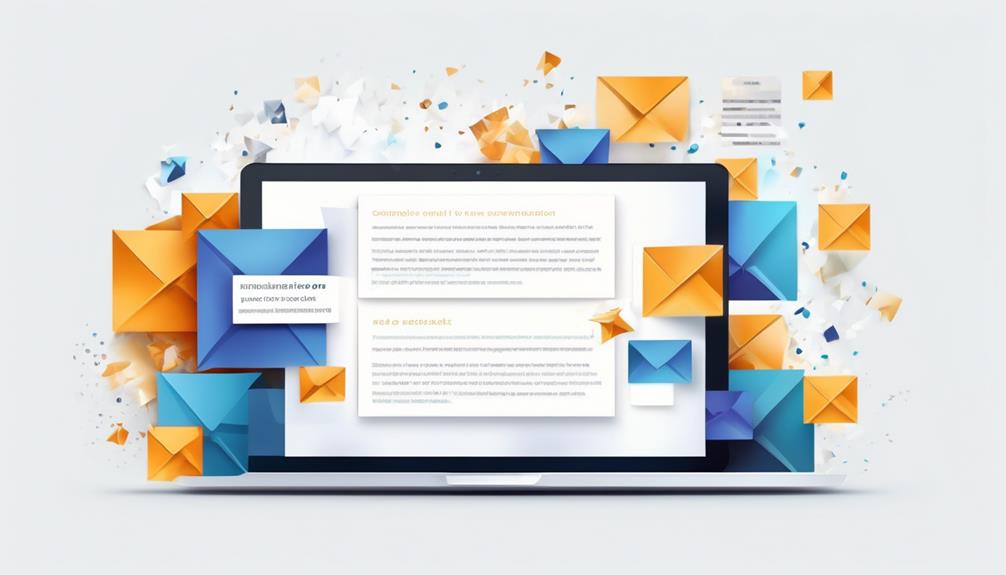
To enhance recipient engagement and relevance, personalizing email content involves tailoring the message to resonate with the individual on a deeper level. By incorporating personalization into your email content, you can create a more meaningful and impactful connection with your audience.
Here are three key strategies for effectively personalizing email content:
- Utilize recipient-specific information: Incorporate the recipient's name, previous interactions, or specific interests to make the email content feel more customized and relevant to their needs and preferences.
- Segment your audience: By segmenting your audience based on their preferences and behavior, you can send targeted and tailored content that aligns with their interests, leading to higher engagement and conversion rates.
- Personalize sender details: Personalize not only the email content but also the sender's name and the subject line to make the communication feel more authentic and individualized, increasing the likelihood of recipient engagement.
Implementing these personalized email content strategies as part of your Email Automation Best Practices can significantly improve the effectiveness of your email campaigns, leading to higher open rates, click-through rates, and overall engagement.
Personalizing Senders
Crafting personalized sender details is a crucial aspect of enhancing email open rates and recipient engagement. When the sender's name resonates with the recipient, it creates a sense of trust and familiarity, leading to higher open rates and increased engagement. Utilizing personalization in the sender field can significantly impact the effectiveness of email campaigns. Take a look at the table below to see the impact of personalized senders and subject lines on email open and engagement rates:
| Personalized Sender | Email Open Rate | Recipient Engagement |
|---|---|---|
| Individual's Name | High | High |
| Department Name | Moderate | Moderate |
| Generic Company | Low | Low |
| No Personalization | Very Low | Very Low |
| Misspelled Name | Very Low | Very Low |
As demonstrated in the table, personalizing the sender field with an individual's name yields the highest open rates and recipient engagement. It's clear that personalization of senders is a crucial component of successful email automation, and it's essential to implement this practice to optimize campaign performance.
Personalizing Subject Lines
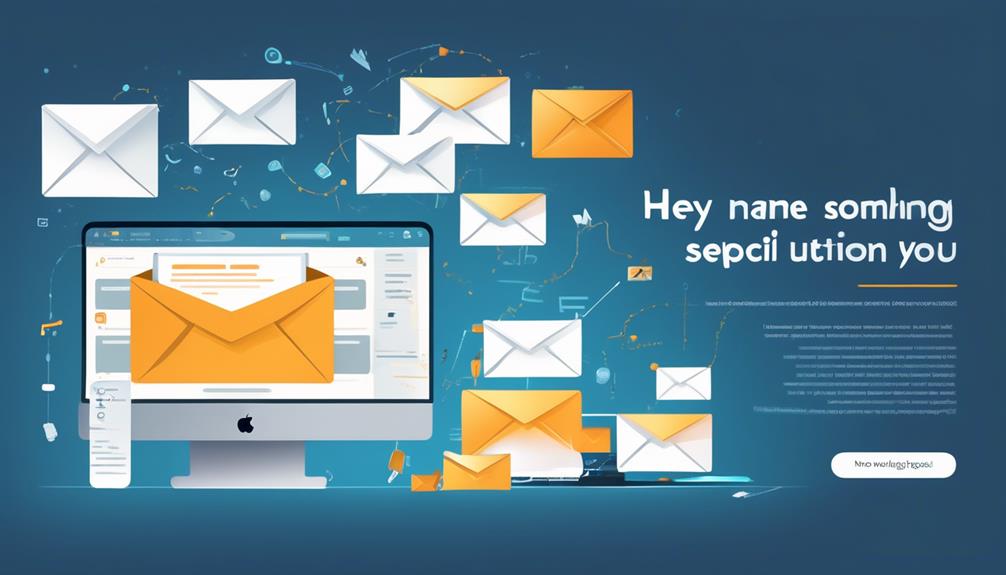
Personalizing subject lines is a key strategy for boosting email open rates and recipient engagement. By incorporating personalized details, such as the recipient's name, location, or past interactions, into subject lines, we can create a more tailored and engaging experience for the recipients.
Using dynamic content to customize subject lines based on the recipient's behavior or preferences further enhances the personalization. Experimenting with different subject line personalization strategies allows us to discover what resonates best with our audience and refine our approach accordingly.
Analyzing data and performance metrics is essential for optimizing personalized subject lines and ensuring improved engagement. Personalizing subject lines not only increases open rates but also fosters a stronger connection with recipients, ultimately leading to higher engagement and conversion rates.
In mastering email automation best practices, personalizing subject lines is crucial for creating impactful and engaging email campaigns.
Being Cautious With Requests
After incorporating personalized details into subject lines to enhance recipient engagement, it is essential to be cautious with how we approach requests in our email automation strategies. When it comes to email marketing, bombarding our audience with requests can lead to disengagement and even prompt them to unsubscribe. Instead, we should focus on providing value before making direct requests. This can be achieved by sending two to three emails ahead of each request, offering helpful information that aligns with the audience's interests and needs.
To illustrate the importance of being cautious with requests, let's take a look at the following table:
| Common Mistakes | Best Practices |
|---|---|
| Asking for too much too soon | Send informative emails before making a direct request |
| Failing to explain the impact | Clearly articulate why the request matters and its impact |
| Neglecting to show gratitude | Send a personalized thank you email after a request |
| Overlooking audience needs | Tailor requests to align with the audience's interests |
Planning Entry Triggers

Planning entry triggers is crucial for effectively managing the flow of individuals into the workflow. When it comes to email automation, strategic planning of entry triggers can make a significant impact on the overall effectiveness of your campaigns.
Here are three key considerations to keep in mind when planning entry triggers:
- Align with Goals and Deadlines: It's essential to ensure that the entry triggers align with the overarching goals and deadlines of your email automation campaign. By doing so, you can maintain a coherent and purposeful flow of individuals into the workflow, ultimately contributing to the achievement of your objectives.
- Define Target Audience and Workflows: Clearly defining your target audience and the types of workflows you want to implement is fundamental. This allows for the precise configuration of entry triggers tailored to the specific needs and behaviors of your audience, enhancing the relevance and impact of your automated emails.
- Visualize Workflow on Paper: Before implementing entry triggers using automation software, take the time to map out the workflow on paper. This practice provides a visual representation of the entry points and paths individuals will take, enabling better decision-making and optimization.
Setting Workflow Goals

When it comes to optimizing email automation, the next step is to clearly define the specific goals for the workflow, ensuring they're measurable and aligned with our overall marketing objectives. Setting workflow goals is a critical component of email automation best practices. These goals should be specific, attainable, and relevant to the overall marketing strategy. By establishing clear objectives, we can effectively measure the success of our email automation efforts and make data-driven decisions to enhance performance.
In setting workflow goals, it's essential to consider the impact on our target audience and their journey. The goals should align with the different stages of the customer journey, providing value and relevance at each touchpoint.
Additionally, setting realistic timelines and milestones for reaching these workflow goals is crucial for tracking progress and making necessary adjustments along the way.
As part of email automation best practices, it's important to regularly review and adjust workflow goals based on performance and feedback. This iterative approach allows us to refine our strategies and ensure that the workflow goals continue to align with the evolving needs of our audience and the overall marketing objectives.
Avoiding Unwanted Emails

To minimize the likelihood of receiving unwanted emails, employ double opt-in mechanisms to ensure that subscribers genuinely want to receive our emails. This process requires subscribers to confirm their email addresses and express consent to receive communication from us.
Additionally, clearly outline the frequency and type of content subscribers can expect to receive when they sign up. By setting transparent expectations, subscribers are less likely to feel surprised or overwhelmed by the emails they receive, leading to a more positive and engaged audience.
Furthermore, provide easy and visible unsubscribe options in every email to give recipients control over their subscriptions. This demonstrates respect for their preferences and can help to retain their goodwill even if they choose to opt out.
Lastly, respect local and international laws, such as CAN-SPAM and GDPR, regarding email consent and privacy. Adhering to these regulations not only demonstrates ethical conduct but also helps to avoid potential legal issues related to unwanted emails.
Incorporating these practices into our email automation strategy will foster a more engaged and satisfied subscriber base while also ensuring legal compliance.
Implementing Message Delays

To build on our strategy for managing unwanted emails, we can now explore the implementation of message delays in our automated email workflow to ensure a more effective and engaging communication approach. Utilizing message delays is crucial in email automation as it allows us to pace the delivery of our emails, preventing recipients from feeling overwhelmed by receiving multiple messages in a short time frame. By strategically incorporating message delays, we can enhance the overall engagement with our emails. These delays provide recipients with time to engage with previous emails, ultimately leading to improved open and click-through rates.
Implementing message delays can be done by introducing intervals between different stages of the email workflow. This gradual progression allows recipients to move naturally through the email sequence and increases the likelihood of them eagerly anticipating upcoming messages. By doing so, we can create anticipation and excitement, resulting in higher engagement and interaction with our email content.
Learning From Past Workflows
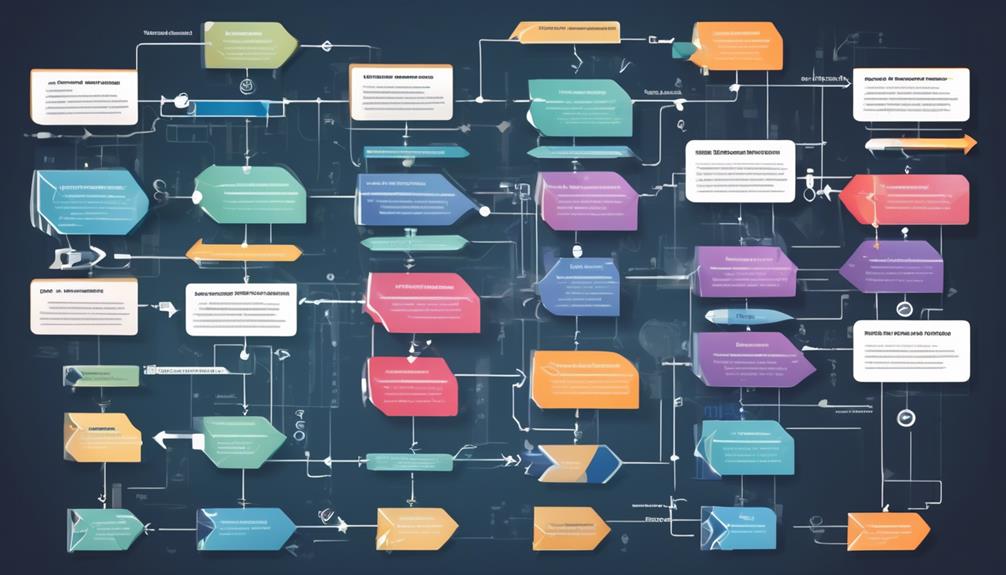
As we reflect on our past workflows, we gain valuable insights into their performance and effectiveness. By tracking metrics such as open rates, click-through rates, and conversion rates, we can identify areas for improvement and optimization.
This analysis allows us to make data-driven decisions and experiment with different approaches, ultimately leading to more efficient and impactful email automation workflows.
Workflow Analysis
Learning from our past workflows allows us to:
- Identify areas for improvement
- Track metrics
- Make data-driven decisions to continuously enhance our email automation campaigns.
When analyzing past workflows, we can:
- Experiment with different approaches
- Generate a sense of excitement and innovation as we strive for continuous improvement.
By learning from what worked well and what didn't, we feel a sense of empowerment, knowing that we can:
- Optimize future workflows based on real data and insights.
Applying these insights to make informed decisions creates a feeling of confidence and assurance in the effectiveness of our email automation campaigns.
Utilizing past workflow data to make informed adjustments evokes a sense of mastery and control, knowing that we can:
- Optimize email content
- Enhance overall workflow performance.
Efficiency Improvements
How can we capitalize on our past workflow data to drive efficiency improvements in our email automation campaigns? Analyzing the performance of past workflows is crucial for identifying areas that can be optimized to enhance efficiency. By tracking metrics such as open rates, click-through rates, and conversion rates, we can make data-driven decisions to improve future workflows. Experimenting with different approaches allows us to determine the most effective strategies. Continuous learning and improvement are essential for successful email automation. Utilizing marketing automation tools can significantly save time and streamline processes. Below is a table summarizing key efficiency improvement strategies:
| Efficiency Improvement Strategies | Description | Benefits |
|---|---|---|
| Analyze past workflow performance | Identify areas for optimization | Improve targeting and engagement |
| Track key metrics | Assess the effectiveness of campaigns | Enhance decision-making |
| Experiment with different approaches | Test new strategies | Refine email automation tactics |
Following Up on Customer Behavior
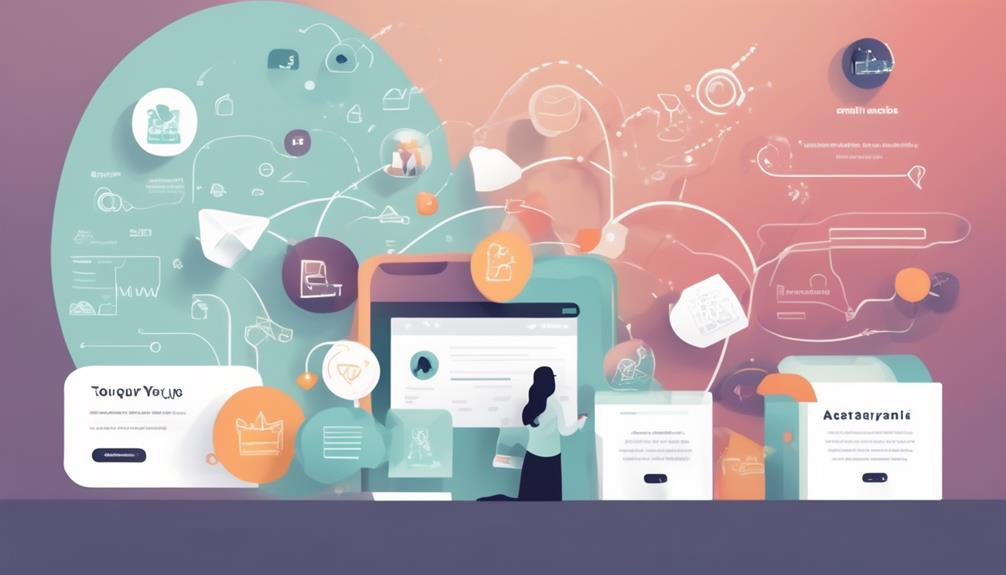
We can use behavior-based triggers to automatically send follow-up emails based on customer actions.
By tailoring our follow-up strategies to the specific product or service the customer has shown interest in, we can increase the relevance and effectiveness of our communications.
It's essential to implement short-term follow-up strategies for immediate engagement and long-term nurture sequences for sustained customer relationships.
Behavior-Based Email Triggers
Behavior-based email triggers should be used to follow up on customer interactions when businesses aim to deliver timely and personalized communication. Leveraging automated emails based on customer behavior allows for tailored responses that can significantly improve engagement and conversion rates.
Businesses can enhance customer satisfaction and nurture leads effectively by utilizing behavior-based email triggers to send targeted follow-up messages. Moreover, these triggers enable businesses to create a more responsive and customer-centric email marketing strategy, leading to stronger customer relationships and brand loyalty.
- Increase customer engagement through personalized communication.
- Improve conversion rates by delivering timely follow-up messages.
- Nuture leads effectively with targeted automated emails.
Personalized Follow-Up Emails
Following up on customer behavior through personalized emails is a crucial strategy for businesses aiming to enhance customer engagement and drive conversions. By utilizing customer behavior data, businesses can create personalized follow-up emails triggered by actions like website visits, product views, or abandoned carts.
Tailoring the content and timing of these emails to individual customer actions can significantly increase engagement and drive conversions. Implementing an automated system to track and respond to customer behavior enables timely and relevant follow-up emails to be sent, further enhancing the effectiveness of this strategy.
Additionally, segmenting the audience based on customer behavior data allows for the sending of personalized follow-up emails that cater to specific interests and actions, contributing to a more targeted and effective approach in email automation best practices.
Building Follow-Ups in Campaigns
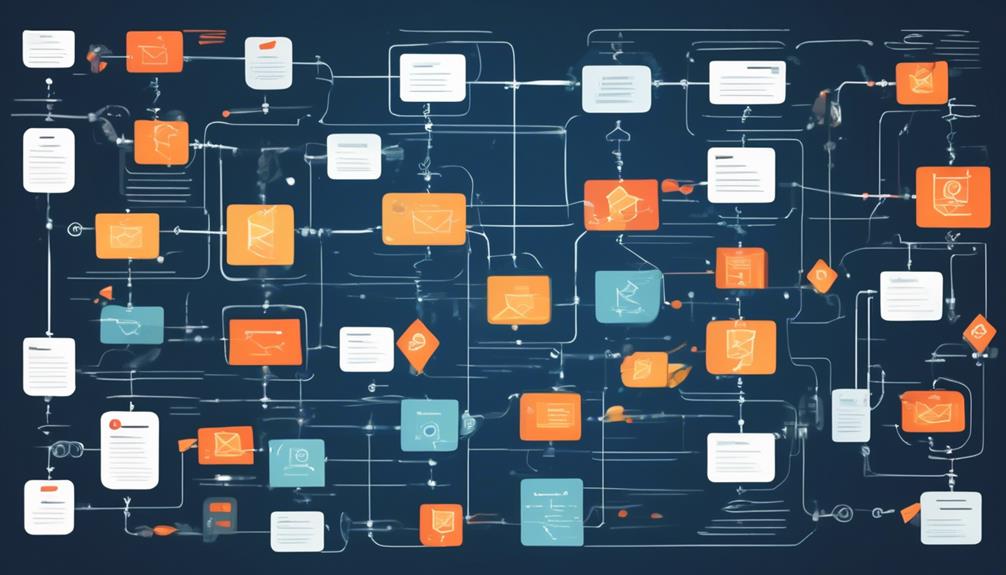
Building effective follow-up campaigns in email automation requires thoughtful consideration of behavior-based triggers and tailored strategies for specific products or services. By implementing short-term and long-term nurture sequences, we can create personalized and engaging follow-up emails that resonate with our audience and drive action.
Here are three essential elements to consider when building follow-ups in campaigns:
- Behavior-Based Triggers: Utilize customer actions and interactions to trigger follow-up emails, ensuring that the content is relevant and timely. This approach demonstrates attentiveness to the recipient's interests and needs, fostering a sense of personal connection.
- Tailored Content Strategies: Craft follow-up emails that are specifically tailored to the unique attributes and benefits of the product or service being promoted. This level of customization showcases our commitment to providing valuable and relevant information, enhancing the recipient's perception of our brand.
- Compelling Calls-to-Action: Incorporate clear and compelling calls-to-action in every follow-up email, prompting recipients to take the next step. By providing a seamless path to engagement, we can effectively guide recipients through the conversion process, driving measurable results for our email campaigns.
These strategies empower us to build follow-ups that not only capture attention but also drive meaningful interactions with our audience, ultimately contributing to the success of our email campaigns.
Delivering Other Content
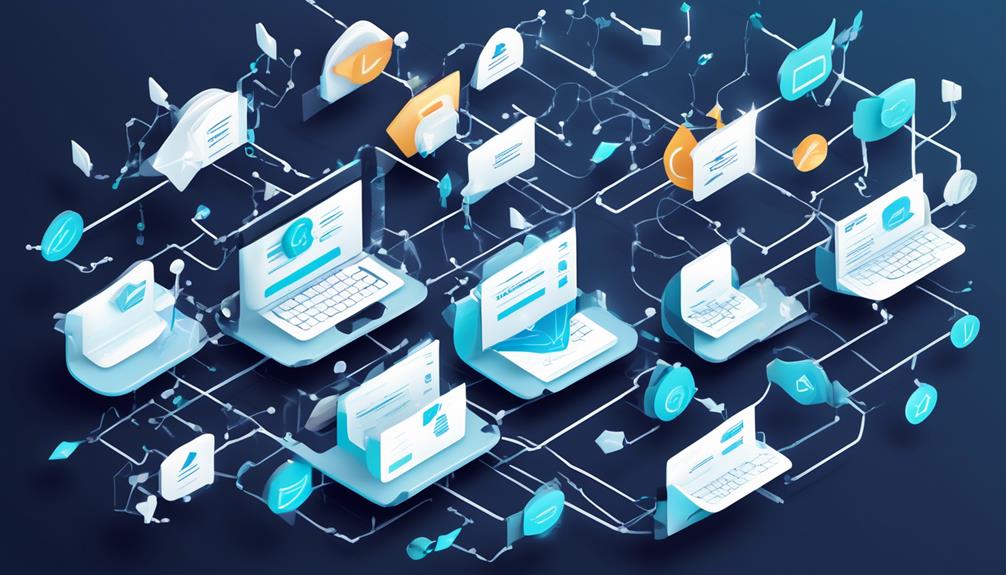
Incorporating personalized product recommendations and targeted content segmentation enhances the delivery of other content in email campaigns. By providing recipients with content that is tailored to their preferences and interests, marketers can significantly increase engagement and conversion rates. Segmenting email lists based on customer behavior, demographics, and purchase history allows for the delivery of more relevant and personalized content, leading to a more positive experience for the recipient.
| Personalized Product Recommendations | Targeted Content Segmentation | Enhanced Delivery of Other Content |
|---|---|---|
| Increases engagement and conversion rates | Delivers relevant content | Provides a positive recipient experience |
| Tailors content to recipient preferences | Utilizes customer behavior and demographics | Enhances email campaign effectiveness |
| Drives higher click-through rates | Improves personalization strategies | Boosts overall marketing campaign performance |
| Encourages repeat purchases | Enhances customer satisfaction | Strengthens brand-consumer relationships |
| Maximizes revenue potential | Increases email open rates | Drives long-term customer loyalty |
Incorporating personalized product recommendations and targeted content segmentation into email marketing campaigns not only delivers other content effectively but also contributes to the overall success of the marketing strategy. This approach not only enhances the recipient's experience but also drives higher engagement and conversion rates, ultimately leading to increased revenue and customer loyalty.
What Are the Best Practices for Implementing Email Automation Strategy?
When implementing an effective email automation strategy, it’s essential to segment your audience based on their behavior and interests. Personalize your emails to provide relevant content. Test different send times and analyze the performance to optimize engagement. Finally, monitor and refine your strategy regularly to ensure maximum impact.
Prompting Immediate Actions

After tailoring content to recipient preferences and enhancing the delivery of other content, the next step is to prompt immediate actions through compelling calls-to-action and time-limited offers in email campaigns. Prompting immediate actions is essential for driving engagement and conversions.
Here are three key strategies to prompt immediate actions in email automation best practices:
- Clear Call-to-Action: Craft a concise and compelling call-to-action that clearly communicates the desired action and its benefits. Use persuasive language and strategic placement to capture the reader's attention and drive them to take immediate action.
- Urgent Language: Incorporate urgent language and time-sensitive phrases to create a sense of urgency and encourage immediate response. Highlight the limited availability of offers or time-limited promotions to prompt recipients to act promptly.
- Dynamic Content: Utilize engaging visuals and dynamic content to captivate the audience and drive immediate responses. Interactive elements, such as personalized product recommendations or interactive surveys, can prompt immediate engagement and action.
Frequently Asked Questions
How Do I Plan an Email Automation?
We plan an email automation by identifying our target audience and the types of workflows we want to implement.
We then map out the structure and branching paths of each workflow on paper before using automation software.
This helps us visualize the workflow and ensure it aligns with our goals and deadlines.
Having a visual representation also aids in understanding the branching paths and the number of emails needed for effective automation.
What Are the Steps in Email Automation?
We start by identifying our target audience and the types of workflows we want to implement.
Then, we plan the structure of each workflow, including branching paths and messages.
Mapping out the workflow on paper before using automation software helps with better visualization.
It's crucial to ensure that our workflow plans align with our goals and deadlines.
Having a visual representation also aids in understanding branching paths and the number of emails needed.
What Is Considered a Best Practice for Email?
In our experience, best practices for email include:
- Personalized content aligned with goals to boost engagement
- Cautious requests for valuable interactions
- Strategic use of entry triggers
Analyzing past performance and optimizing workflows is crucial. Segmented and personalized automated emails have significantly higher open rates.
These practices emphasize the importance of personalization and segmentation in successful email campaigns.
How Effective Is Email Automation?
Email automation is highly effective for engaging and nurturing leads. It saves time by sending targeted messages based on contact information and behavior. Personalization of content, senders, and subject lines significantly improves open and engagement rates.
We find it to be a crucial tool for efficient communication. Continuous analysis and optimization of past workflows are essential for enhancing its effectiveness.
Conclusion
As we wrap up, remember that successful email automation is a delicate balance of personalization and strategic planning. By carefully crafting workflows, personalizing content, and following up on customer behavior, we can build trust and engagement with our audience.
It's about finding the sweet spot between automation and human connection, and using the right tools to deliver value to our customers.
So, let's continue to refine our email automation practices and watch our marketing efforts thrive.





